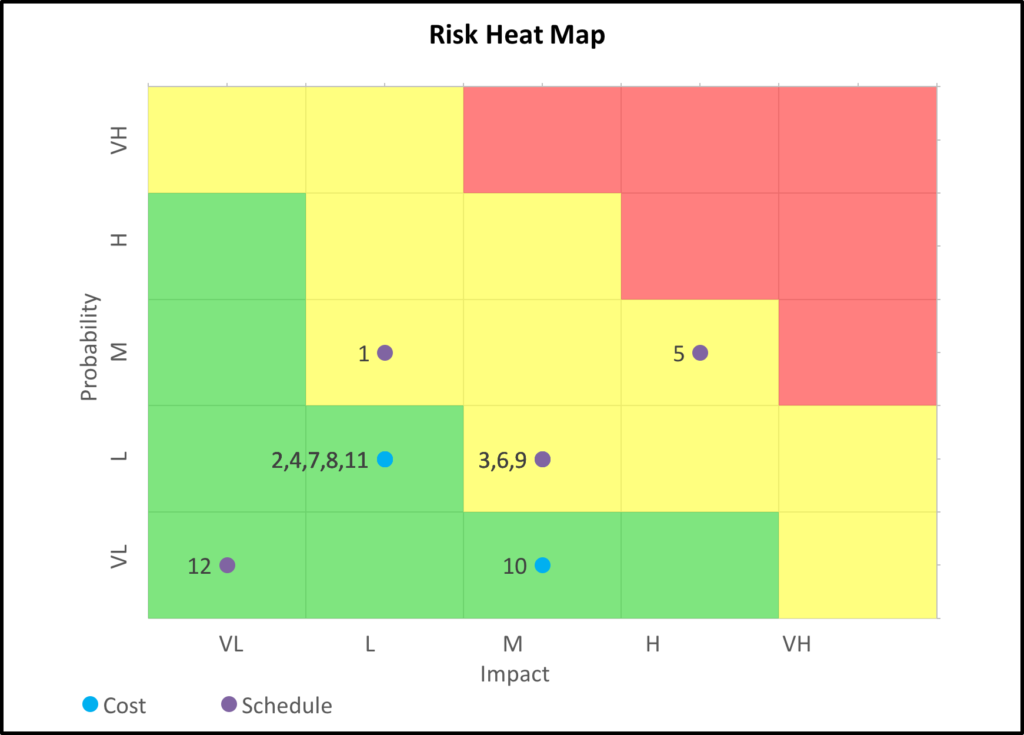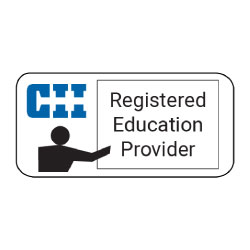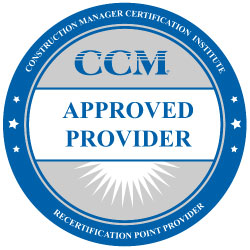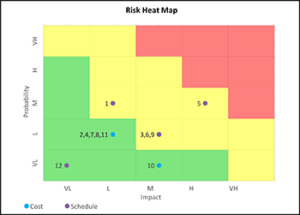Project Risk Management Principles & Practices (VAL-107)
Course Summary
 This one-day course offers participants the opportunity to learn how to effectively implement risk management principles and practices in small and midsize capital projects. Projects under $20 million can carry substantial risk, but the size of the project doesn’t normally warrant a full-time risk manager. This course is designed for project leaders who are tasked with managing project risk and are seeking a practical, easy-to-use risk management process they can implement, along with the supporting tools. In this course, we will introduce the Construction Industry Institutes’s risk management best practices, scaled for time-efficient use in small and midsize capital projects. Using interactive case studies, participants will work in small project teams to apply course learnings and conduct a risk identification workshop, complete an assessment of identified risks, and develop risk responses. Participants will benefit from hands-on experience in utilizing easy-to-use risk tools and templates for small and midsize projects (included in the course package).
This one-day course offers participants the opportunity to learn how to effectively implement risk management principles and practices in small and midsize capital projects. Projects under $20 million can carry substantial risk, but the size of the project doesn’t normally warrant a full-time risk manager. This course is designed for project leaders who are tasked with managing project risk and are seeking a practical, easy-to-use risk management process they can implement, along with the supporting tools. In this course, we will introduce the Construction Industry Institutes’s risk management best practices, scaled for time-efficient use in small and midsize capital projects. Using interactive case studies, participants will work in small project teams to apply course learnings and conduct a risk identification workshop, complete an assessment of identified risks, and develop risk responses. Participants will benefit from hands-on experience in utilizing easy-to-use risk tools and templates for small and midsize projects (included in the course package).
Learning Objectives
- Explain the key components of the Construction Industry Institute’s (CII) risk management process
- Conduct a risk identification meeting in a manner that increases team alignment
- Select an appropriate level of risk assessment based on project complexity
- Develop actionable risk responses
- Maintain a Risk Register for tracking and communicating project risk
- Understand project team roles and responsibilities in risk management
- Set expectations with senior stakeholders of how risk management will improve cost and schedule performance and increase project predictability.
- Apply standard risk management terminology in accordance with the Project Management Institute (PMI)
Who Should Attend
This course targets project leaders involved in managing risk in capital projects. Recommended attendees include Program Managers, Project Managers, Project Engineers, Architects, Project Controls Managers, Design Managers, Designers, Quality Managers, Project Management Office leaders, Construction Managers, Technical Managers, Project Estimators, Contract Administrators, Quantity Surveyors, and others.
Course Outline
Introduction
- Overview of course objectives and agenda
- Interactive exercise – participants will complete a survey on the level of maturity of project risk management in their organization.
- Introduction to the Construction Industry Institute’s Risk Management best practice area and its role in improving project performance
Risk Management Process
- Introduction to risk management
- Owner and contractor perspectives on risk
- The risk management process
- Applying risk management throughout the project lifecycle
- Roles and responsibilities
Risk Identification
- Major sources of risk
- Risk identification methods – brainstorming, structured interviews, documentation review and risk checklists
- Supporting tools (included in the course package)
- Risk Register template
- Risk Breakdown Structure (RBS)
- Construction-focused Risk Checklist
- Using the Risk Register template to document identified risks
- Interactive exercise – Case Study, Part 1. Participants will form small project teams and conduct a risk identification session. The team will utilize structured brainstorming, risk checklists, and the knowledge and experience of the project team. Identified risks will be added to the project’s Risk Register.
Risk Assessment
- The assessment process for identified risks
- Selecting an appropriate risk assessment level for each project
- Level 1 – Risk Identification
- Level 2 – Probability & Impact
- Utilizing the Risk Assessment tables (Level 2)
- Recording assessment results in the Risk Register
- Interactive exercise – Case Study, Part 2. Each project team will complete an assessment of identified risks utilizing the Risk Assessment tables and update their Risk Register.
Risk Response
- Developing risk response plans and actions
- Risk response strategies
- Examples of “actionable” risk responses
- Project contingency
- Interactive exercise – Case Study, Part 3. Each project team will develop appropriate risk responses for their identified risks and update the Risk Register.
Risk Monitoring
- Tracking and reporting risks using the Risk Register
- Monitoring existing risks and execution of risk response plans and actions
- Integrating risk status into regular project communications and reporting
Summary
- Revisit the group’s survey results on organizational maturity of risk management
- Review how risk management can be applied to improve project performance
- Discuss important “take-aways”
- Conduct course evaluation
Certificate
A certificate of completion for 7 Professional Development continuing education (PDH) credits will be issued to those who attend and complete the course. The course is conducted by Valency, a Registered Education Provider for the Construction Industry Institute (CII) and the Construction Management Association of America (CMAA).


Upcoming (VAL-107) Dates

Course – Risk Management Principles & Practices (VAL-107)
Dec 3 @ 10:00 am - Dec 4 @ 2:00 pm EST at Virtual Classroom
